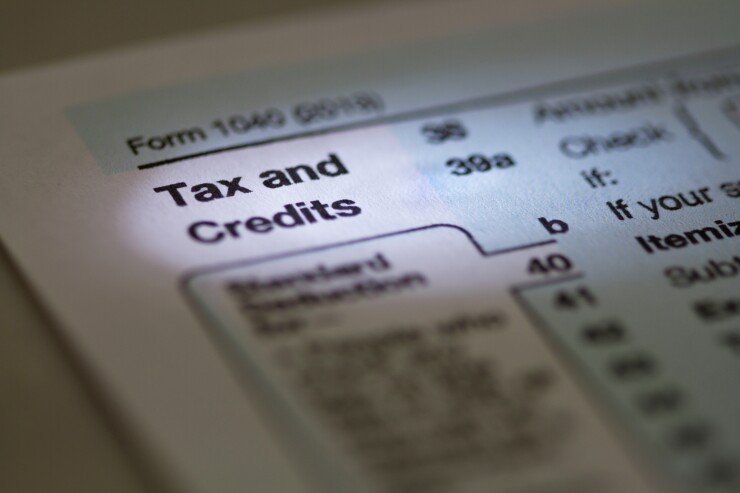More taxpayers can claim additional CTC and health coverage subsidies

More than 30,231 taxpayers may now qualify for Additional Child Tax Credits totaling over $16 million after the Internal Revenue Service implemented a provision of the American Rescue Plan Act last year that expanded eligibility for premium tax credits to buy health insurance.
On Friday, the White House announced plans to unveil a CTC simplified filing portal at an event next Wednesday. The online tool will be available at GETC.org.
A report released Thursday by the Treasury Inspector General for Tax Administration examined the IRS’s implementation of provisions of the 2021 law that temporarily enhanced benefits and eligibility for the premium tax credit.
For tax year 2020, under the ARPA law, taxpayers were not required to repay any excess advanced premium tax credits (APTC), which the government uses to subsidize Obamacare health insurance coverage. For tax years 2021 and 2022, taxpayers also got increased premium tax credits for all income brackets and the law reduced the health insurance premiums they would be required to pay. In addition, taxpayers who received or were approved to receive unemployment compensation in 2021 were considered to have met the household income requirements for premium tax credit eligibility and would not have to pay premiums if they were enrolled in a benchmark plan or a less expensive plan on the Obamacare health insurance exchanges.

Picasa/jfergusonphotos – stock.adobe.co
The TIGTA report found the IRS took immediate steps to remove excess APTC repayments from tax year 2020 returns in accordance with ARPA. As of Aug. 12, 2021, the IRS offered relief to nearly 1 million taxpayers by removing $942 million in APTC repayments from their tax returns, resulting in $845 million in tax reductions to these taxpayers’ accounts as part of the ARPA recovery efforts. While nearly a million taxpayers got extra relief on the premium tax credit side, many may now be able to benefit even more from the enhanced child tax credit, which was another provision of the American Rescue Plan Act.
“Although the IRS took timely actions to implement the applicable Tax Year 2020 provisions of the ARPA, TIGTA identified 30,231 taxpayers who may now qualify for Additional Child Tax Credits totaling $16.4 million,” said the report. “These taxpayers, however, must take additional actions to receive these additional benefits.”
The report found some faults in the IRS’s implementation of the premium tax credit provisions of the law. The IRS didn’t develop processes and procedures to verify the accuracy of premium tax credit claims based on unemployment compensation. The IRS isn’t requiring documentation to support a taxpayer’s claim that they received or, more importantly, were approved to receive unemployment compensation when it is the sole basis for their premium tax credit claim. In response, IRS management said they’re not requiring taxpayers to provide documentation but told TIGTA that a checkbox was added on the Form 8962, Premium Tax Credit (PTC). This checkbox will serve as both attestation and documentation of the taxpayer’s receipt or approval of unemployment compensation. The IRS indicated it plans to conduct a limited number of attestation verifications as part of its post-processing compliance efforts.
The report also noted the IRS has an opportunity to help educate taxpayers and inform them about their options if they’re victims of domestic violence. The header section of Form 8962 for claiming the premium tax credit includes a checkbox for taxpayers to identify themselves as victims of domestic abuse or spousal abandonment for the purposes of qualifying for the PTC if they are married filing separately. An analysis of tax year 2019 forms found that 14,273 taxpayers had checked the box for victims of domestic abuse or spousal abandonment, and as of May 27, 2021, but only 13 of them had an indicator on their taxpayer account that they were victims of domestic violence. TIGTA issued three alerts to IRS management during its review, and IRS management took action or plans to take action to address each of these alerts.
TIGTA made four recommendations to the IRS. These include notifying eligible taxpayers that they may qualify for additional recovery money due to the removal of excess APTC repayments, updating taxpayer outreach on its public-facing website, and updating Form 8962 instructions to inform taxpayers of their options to report to the IRS that they are a victim of domestic violence. The IRS agreed with all four of TIGTA’s recommendations and said that it had adjusted many of the tax returns to provide them with the extra premium tax credits and child tax credits. As of August 2021, the IRS adjusted over 955,000 tax returns that had reported $941.6 million in APTC repayments. Removing those reported repayments resulted in a tax reduction of approximately $845.5 million for those individuals. Some returns that had excess APTC repayments removed were also affected by a related ARPA section, which provided an exclusion of up to $10,200 for people who received unemployment benefits in 2020. The IRS also made the adjustment along with the removal of the APTC repayments.
“In cases where the reduction of unemployment compensation caused other tax benefits, such as deductions and/or refundable credits to change, those items were adjusted as well,” wrote Kenneth Corbin, commissioner of the IRS’s Wage and Investment Division, in response to the report. “After adjustment, some returns appeared to qualify for the Additional Child Tax Credit, but more information was needed to make that determination.”
The IRS sent out CP 08 letters to taxpayers informing them they may qualify for the Child Tax Credit and may be eligible for an additional refund, listing the information needed to file an amended return. “If the Child Tax Credit or other tax benefit was not claimed on the original return, then an amended return will need to be filed,” said Corbin.


